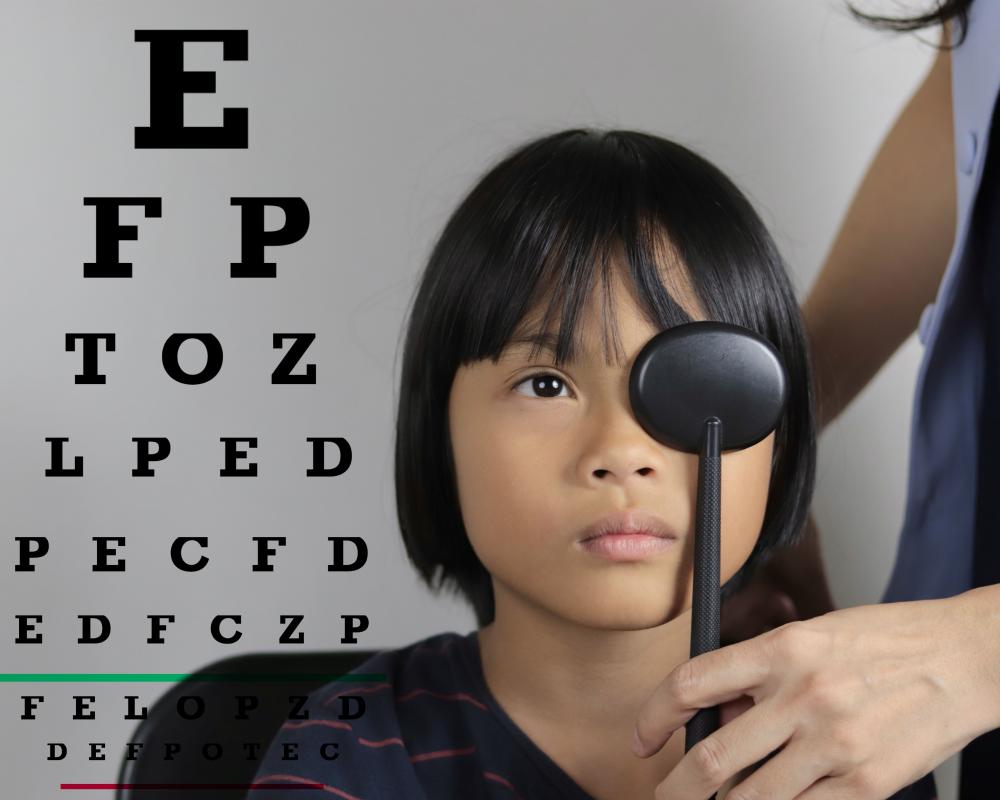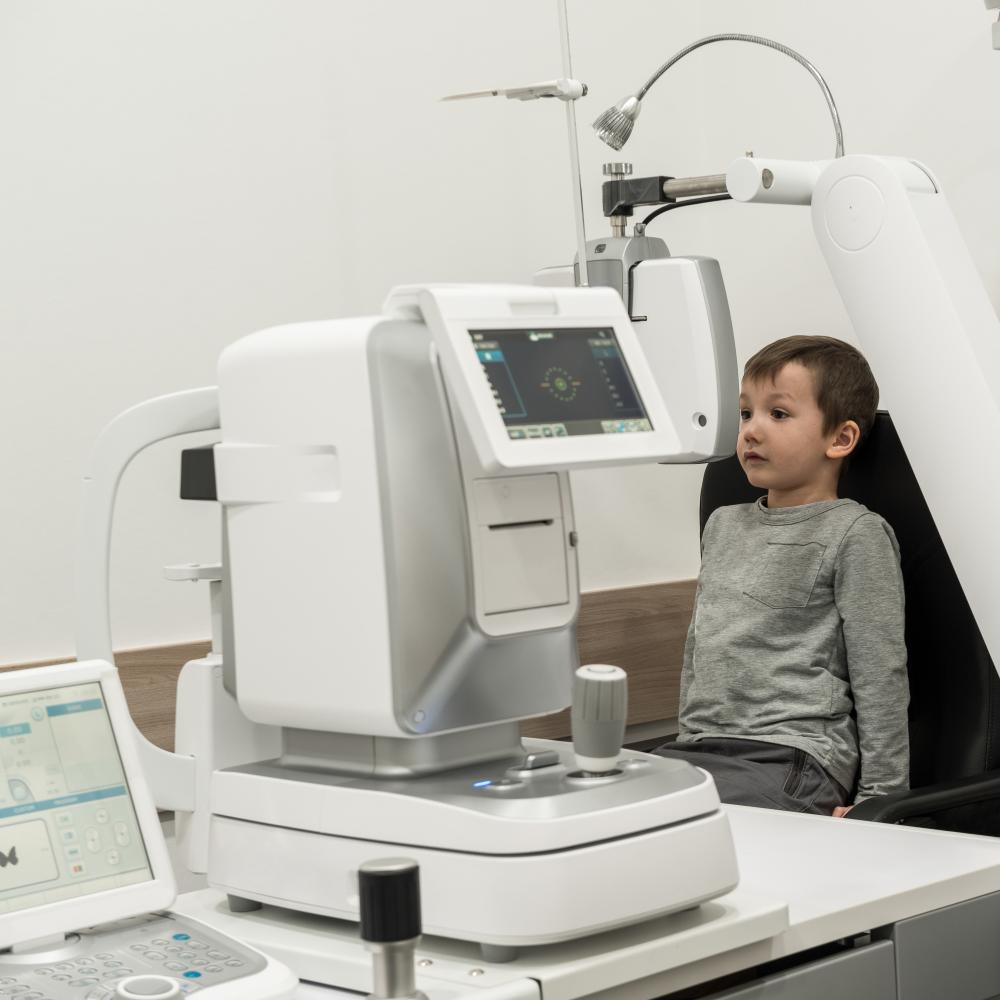Table of Contents
Understanding Amblyopia

The visual journey is fascinating and complex, beginning with the eyes but truly taking shape within the fabric of the brain. Amblyopia, often colloquially known as “lazy eye,” emerges when this process is disrupted, and one eye fails to achieve the visual acuity it’s capable of. It’s as though the brain, in its intricate dance of neural pathways, chooses to waltz with one eye while neglecting the other.
In my years working at Fresnel Prism, I’ve seen firsthand the frustration and challenges that come with amblyopia. If left unaddressed, it can lead to a lifetime of compromised vision. Thankfully, innovations in amblyopia correction are providing new avenues of hope for those affected.
The eye not favored by the brain doesn’t receive a clear image due to misalignment or refractive errors. It’s essential to catch and correct amblyopia early, ideally before the age of seven, when the brain’s visual system is still quite malleable.
Amblyopia Correction Options
In our practice, we prioritize educating patients about their options for amblyopia correction. Traditional methods include patching the dominant eye to encourage the weaker one to strengthen. This simple yet effective approach has been the cornerstone of amblyopia therapy for years.
However, the path to clearer vision doesn’t end with patching. For some, corrective glasses or contact lenses that equalize the vision between both eyes can show significant improvement. And in cases where refractive discrepancies are pronounced, laser surgery may even be considered to alter the eye’s shape for better light focus.
Novel Approaches in Amblyopia Treatment
As part of our commitment to cutting-edge solutions at Fresnel Prism, we’re excited about less traditional treatments that have emerged. Among these is the use of atropine drops to blur the vision of the dominant eye, much like patching but without the physical obstruction.
Additionally, there are novel computer programs and vision exercises that can aid in training the brain to use both eyes effectively. These techniques harness the neuroplasticity of the brain, tapping into its ability to change and adapt, even beyond the early years of visual development.
It’s not uncommon for us to tailor a combination of these methods to fit the unique needs of each person’s vision, blending old and new for optimal amblyopia correction.
Perspectives from Experience: The Human Touch in Treatment
One of the aspects I cherish most about my role at Fresnel Prism is the opportunity to witness the human aspect of vision restoration. Amblyopia correction is not just a clinical process; it’s a journey that transforms lives.
Take, for instance, a young girl we treated who had been struggling in school due to her amblyopia. It wasn’t until after a series of personalized treatments that she truly saw the world in full detail for the first time. The joy in her eyes was palpable, a reminder of why we do what we do.
In another case, a gentleman in his late twenties believed his chance for improved vision had passed. But with persistence and a tailored regimen, we witnessed significant improvement. These stories underline the power of amblyopia correction, and they are the fuel that drives our passion for innovation.
Embracing Technology: A Vision for the Future
At Fresnel Prism, we’re not just about the status quo. We look to the horizon, eager to embrace technologies that push the boundaries of what’s possible in amblyopia correction. Our collaboration with tech companies to develop virtual reality programs is one such venture that holds promise for immersive and engaging treatment modalities.
Imagine a child donning a VR headset, playing games designed to correct amblyopia while having fun. It’s a scenario that’s becoming a reality as we speak, and one that could revolutionize how we approach eye care and rehabilitation.
Challenges in Amblyopia Correction

Despite the leaps we’ve made in amblyopia correction, challenges remain. Access to treatment can be one, especially in communities where eye care isn’t as readily available. It takes a joint effort from healthcare providers, educators, and parents to ensure early detection and intervention.
Compliance with treatment is another hurdle. Convincing a child to wear an eye patch or undergo regular eye drops can be a test of patience. It requires creativity and empathy, turning what could be a chore into a rewarding experience. We’ve seen success with customizable patches and involving children in their treatment choices, making them active participants in their own vision correction journey.
Corrective Surgery: Insights and Overlooked Aspects
Surgery is often viewed as a last resort for amblyopia correction, but it’s worth considering in certain circumstances. It can be particularly effective for correcting the underlying physical causes of some types of amblyopia, such as strabismus or cataracts.
In our practice, we’ve observed that when combined with other treatments, surgery can offer substantial improvements. But it’s crucial to follow surgical interventions with rigorous post-op care and vision therapy to reap the full benefits.
A Personal Anecdote: The Impact of Compassionate Care
Through my years at Fresnel Prism, I’ve learned that the technical side of treatment is only half the battle. The other half is the compassionate support we provide. I recall a mother, weary from her son’s lack of progress with other specialists, finding solace in our approach. Not only did we offer new options for amblyopia correction, but we also gave her the reassurance and guidance she desperately needed.
This experience reinforced my belief that our role exceeds providing medical care; we’re here to offer hope, understanding, and a path forward for families confronting vision challenges.
Continuing Education in Amblyopia
Education is vital for effective amblyopia correction. We must continuously update our knowledge base and techniques to offer the best care. At Fresnel Prism, we invest in ongoing professional development and research, ensuring that our team remains at the forefront of optical science.
By sharing our insights and learning from the global community of eye care professionals, we amplify our impact and foster a world where amblyopia correction is accessible and effective for everyone.
Concluding Thoughts on Amblyopia Correction
In sum, amblyopia correction is a multifaceted endeavor that melds science, technology, and the human spirit. At Fresnel Prism, we’re dedicated to the quest for better sight, for vision is more than seeing–it’s about experiencing the world in its full splendor.
As we continue to innovate and refine our approaches, we remain steadfast in our mission to help each person achieve their best possible vision. For in each success, we not only correct amblyopia but also enhance the colorful tapestry of life’s experiences for our patients.

Can amblyopia be corrected?
At Fresnel Prism, our dedication to vision correction reveals that amblyopia, commonly known as lazy eye, can indeed be corrected. Our clinical experience, coupled with robust evidence, supports the intervention approach, which may include vision therapy, corrective lenses, or surgery, depending on the individual’s needs. Each person’s journey to better vision is unique, and we pride ourselves in offering personalized treatments that cater to the specific challenges of amblyopia.
At what age can amblyopia be cured?
The optimal window for correcting amblyopia is during early childhood, ideally before the age of seven. The brain’s visual system exhibits a high degree of plasticity in these formative years, making it more receptive to correction. However, it’s a common misconception that treatment cannot benefit those older than seven. While it may require more time and dedication, significant improvements can be achieved at any age, as we’ve witnessed here at Fresnel Prism.
When is it too late to treat lazy eye?
It’s an inspiring aspect of our work at Fresnel Prism to reinforce that it’s rarely too late to treat lazy eye. Though the likelihood of complete correction diminishes as one grows older, meaningful progress can still be made. We encourage anyone with amblyopia, regardless of age, to explore treatment options. Our team has observed remarkable strides in visual acuity in adults who have embraced tailored amblyopia treatment regimens.
Can you fix lazy eye naturally?
While the term ‘naturally’ can vary in interpretation, amblyopia often requires active intervention to correct. This includes structured vision therapy exercises that are designed to enhance the cooperation between the eyes and brain. Such exercises, which can often be performed at home, are natural in that they use the body’s own mechanisms of neural adaptation to improve vision, rather than relying solely on medical or surgical methods.
How does technology enhance amblyopia treatment?
At Fresnel Prism, technology is a catalyst for innovation in amblyopia treatment. We embrace advancements such as virtual reality, which offers immersive experiences tailored to improve binocular vision. By transforming traditional exercises into interactive games, technology not only makes treatment more engaging for patients but also allows for precise tracking of progress. There’s great promise in these advanced tools to enrich the treatment experience and outcomes.
Resources on Amblyopia
-
National Eye Institute (NEI): Provides comprehensive information on amblyopia, including details on causes, symptoms, diagnosis, and treatments.
Visit NEI for Amblyopia Information -
Centers for Disease Control and Prevention (CDC): Offers resources on vision health, including guidance on eye conditions such as amblyopia and the importance of early detection and treatment.
Visit CDC’s Vision Health Initiative -
American Academy of Ophthalmology (AAO): Provides a patient guide to understanding amblyopia and its treatment options, supported by medical professionals.
Visit AAO for Amblyopia Patient Guide -
American Optometric Association (AOA): Offers detailed information on amblyopia including risk factors, diagnosis, and treatment recommendations from optometry experts.
Visit AOA for Amblyopia Details -
Prevent Blindness: Provides educational materials on amblyopia, emphasizing the prevention and early detection of vision issues in children.
Visit Prevent Blindness for Amblyopia Education -
MedlinePlus: Offers resources compiled by the U.S. National Library of Medicine, including a medical encyclopedia entry on amblyopia and the latest related research.
Visit MedlinePlus for Amblyopia Encyclopedia
